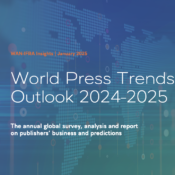
The Power of Storytelling in Middle Eastern Branding: A UAE Perspective
It’s clear that the UAE has become a hub for brands from all corners of the world. Today, many of these are discovering that storytelling is a creative exercise and a powerful tool to forge deep connections with their audiences. Rooted in the rich traditions of the Middle East, storytelling transcends mere marketing, becoming a bridge between brands and the multicultural fabric of the region. As businesses seek innovative ways to stand out in this competitive landscape, leveraging the art of storytelling has proven to be an indispensable strategy.
Why Storytelling Matters in Branding
Stories are fundamental to human communication. Across cultures, storytelling has been a way to pass down values, beliefs, and lessons. In the context of “branding”, stories create emotional connections, making brands relatable and memorable. In the UAE, where the population comprises a mix of locals, expatriates, and tourists, the right story can resonate with a diverse audience, fostering loyalty and trust.
Storytelling in branding is not just about narrating a tale. It is about crafting an experience, shaping perceptions, and creating a dialogue with the audience. For Middle Eastern markets, this involves integrating cultural authenticity, historical depth, and modern aspirations into the narrative. By doing so, brands not only capture attention but also inspire action.
The Role of Culture and Tradition in Storytelling in the UAE
The UAE’s cultural heritage is deeply rooted in storytelling traditions, from Bedouin poetry to fables passed down through generations. A great example is the 1001 Arabian Nights, the compilation of these by Richard Francis Burton was historically stories from the Arabian Peninsula. Even “Ali Baba and 40 Thieves,” was folklore that stemmed from the Arabian world. These stories often emphasize themes of resilience, community, and innovation – qualities that align seamlessly with modern branding goals. Not to say that the former folklore have resonance with modern day branding, but more that storytelling is part of a culture that epitomizes the Middle East.
Today, as more and more companies set their eyes on Middle Eastern expansion, many corporate brands operating in the UAE have a unique opportunity to weave these cultural elements into their stories. For instance, campaigns that highlight Emirati traditions, such as hospitality (“hayyakum”), or incorporate local symbols, such as falcons or the desert, can evoke a sense of familiarity and pride among the audience. This cultural resonance is particularly vital during occasions like Ramadan, National Day, and Expo-related events, where stories that reflect local values can have a significant impact.
Storytelling in Action: Examples from the UAE

Storytelling in Dubai
- Dubai’s Visionary Narrative Dubai itself is a cultural phenomenon to the power of storytelling. It’s transformation from a small fishing village to a global metropolis alone depicts a vision that its ruler had that came to life. The tiny Emirate’s narrative of ambition, innovation, and luxury has been masterfully told through its branding, albeit by its leader Sheikh Mohamed bin Rashid Al Maktoum who is a visionary himself. Iconic landmarks like the Burj Khalifa, The Palm Jumeirah, and Expo 2020 serve as symbols of this story, drawing millions of visitors and investors.
- Etihad Airways’ Cultural Connection Etihad Airways, one of the UAE’s leading brands, effectively uses storytelling to emphasize its roots and global ambitions. Through campaigns like “Choose Well,” Etihad highlights both the warmth of Emirati hospitality and the sophistication of modern travel, blending cultural pride with universal appeal.
- Noon’s Localized Approach Noon, a homegrown e-commerce platform, taps into local stories and needs. By positioning itself as “the region’s very own online marketplace,” Noon’s campaigns celebrate regional identity while addressing the modern consumer’s expectations.
Elements of Effective Storytelling in the UAE Market
For brands aiming to captivate the UAE audience, the following elements are essential:
- Authenticity: Stories must reflect genuine values and experiences. Audiences can discern when a brand’s narrative feels forced or insincere. We often hear the term “Only in Dubai”, when it comes to the grandiosness of Dubai.
- Relevance: Tailor the story to align with the cultural, social, and economic realities of the UAE. For instance, highlighting sustainability initiatives resonates well with the UAE’s vision for a greener future.
- Emotion: Evoke feelings of pride, nostalgia, or aspiration. Emotional connections drive engagement and loyalty. A great example is the emotional feeling prior to landing in Dubai that Emirates Airlines gives in its welcome message.
- Visual Appeal: In a region where digital consumption is high, visually rich and compelling content is crucial. Utilize platforms like Instagram, TikTok, and YouTube to bring stories to life.
- Inclusivity: The UAE is home to over 200 nationalities. While respecting Emirati culture, stories should also acknowledge and celebrate the diversity of the expatriate community. The beauty is that Dubai even on its national day, celebrates it through diversity, which invokes a sense of belonging among the residents of the Emirate.
The Role of Technology in Storytelling
The UAE’s tech-savvy population provides an ideal audience for digital storytelling. Social media platforms, augmented reality (AR), and virtual reality (VR) have transformed how stories are told and consumed. Brands can create immersive experiences, such as virtual tours of cultural landmarks or interactive campaigns that invite audience participation. Just visit the Museum of the Future and see what the UAE offers.
Additionally, data analytics enables brands to understand their audience better, allowing for personalized and impactful storytelling. By analyzing engagement patterns, brands can refine their narratives to resonate more deeply with specific segments of their audience.
Conclusion
In the UAE, storytelling is more than a marketing tactic rather it espouses a way to connect with a diverse and discerning audience on a deeper level. By embracing the region’s rich cultural heritage, leveraging modern technology, and crafting authentic narratives, brands can distinguish themselves in an increasingly competitive market.
The power of storytelling lies in its ability to inspire, engage, and transform. For brands in the UAE, telling the right story can be the key to not only standing out but also building lasting relationships with their audience. As the market continues to evolve, those who master the art of storytelling will find themselves at the forefront of the region’s branding landscape.




